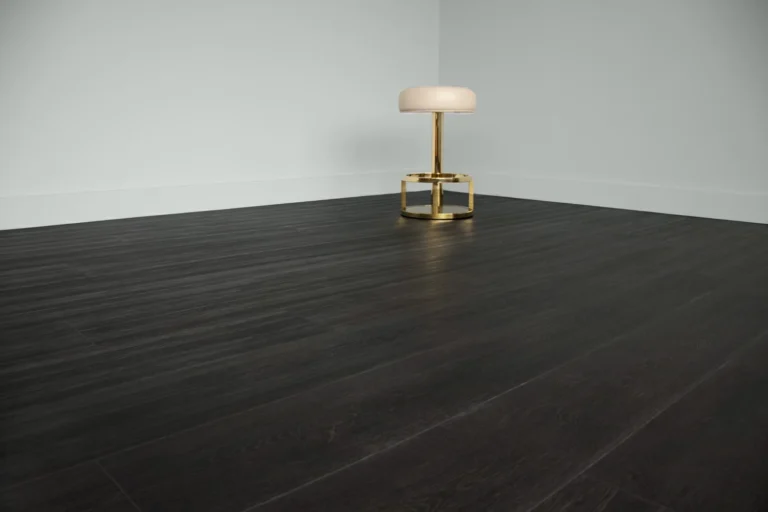Important Factors to Think About When Selecting Flooring (Pt. 1)
With all the different types of flooring colors, species, and patterns available, selecting floors for your home may be a daunting task.
Before you go shopping around and getting floor samples, there are a few important factors to consider that will save you time and money. Think of this as a friendly checklist to work through when preparing to select a new floor.
By utilizing each factor listed below you’ll not only have a better understanding of what you’re looking for but you will be more comfortable purchasing the perfect flooring for your home.
Now’s the perfect time to grab a pen and paper to take notes and jot down your thoughts as we go through important factors to think about when selecting flooring for your home:
- Costs/Budgets
- Rooms
- Style, Aesthetics, Adaptability
- Lifestyle (and Durability)
- Installation Requirements
- Maintenance
- Return on Investment (ROI)
- Other Minor, Yet Still Important Factors
A few of these factors may have occurred to you since some are pretty obvious however, there are some factors less considered, mainly because they don’t come to mind until later down the road. This can often be a costly regret, especially if the selected flooring has already been installed.
Costs/Budgets
Arguably the most important factor, establishing a budget is crucial when floor shopping. It should go without saying that the cost of flooring differs based on the type of flooring, but also how much is needed, which is dependent on the room sizes within your house.
There are different types of flooring, such as carpet, tile, hardwood, laminate, vinyl, and bamboo, just to name a few. They all have different costs, as well as longevity costs too. It’s not enough to just budget for material cost and installation. Regardless of which flooring you choose, you should also consider maintenance, repairs, and possibly replacement into your budget.
Materials like carpet and laminate flooring may be cheaper to purchase today compared to hardwood flooring or stone. Yet in the long term, hardwood flooring lasts longer than both if installed and maintained properly. Laminate flooring on the other hand, will require more frequent maintenance and even replacements.
Another aspect of cost is quantity. Houses and rooms come in different sizes, and this is even more true if you decide to use more than one type of flooring in your home. However, this is the case where, the bigger the room, the more expensive your flooring costs will be since materials are purchased based on square footage. Keep in mind that this includes having to purchase extra material to ensure you have enough, such as for hardwood floors, it’s suggested to purchase 20% more than what’s needed for your square footage.
Just a quick recap – when it comes to budgeting for flooring costs, keep in mind that there are multiple things to consider besides the cost of the material today, such as installation costs, maintenance costs, and more.
Rooms
With rooms, we don’t mean the room size this time. We’re talking about the various rooms within your house and the type of flooring that works best for each room.
We’ve seen it many ways – homes with one type of flooring throughout, and homes with multiple types of flooring throughout. This is really based on preference with a splash of the “best type of flooring for each room.”
Think of it this way, when have you ever seen carpet in a bathroom or kitchen? Doesn’t make sense, right?
If those are your preferences, by all means go for it. There’s no right or wrong way to do your flooring. However, there are suggestions for the best type of flooring for each room that you should consider. These suggestions are based on real examples and flooring characteristics.
For instance, different types of tile flooring work best for rooms where moisture may be involved, such as kitchens, bathrooms, and dining rooms, instead of hardwood floors, whose worst enemy is moisture.
By taking the time to consider what goes on in every room, you’ll be better prepared to understand the type of flooring you would need, especially in the long run.
Style, Aesthetics, Adaptability
Flooring goes beyond just flooring – this means that flooring impacts a room’s aesthetics, which often dictates a home’s ambiance. To get the right aesthetics, this requires selecting the “right” flooring for your home, one that looks good and fits your style.
Luckily, most types of flooring come in various colors and textures!
With engineered hardwood flooring, you can be more selective and choose flooring based on size, thickness, wear layer, color, pattern, and more. This guarantees that your flooring selections will be a perfect fit for you and your home.
Not only is it important to select flooring that showcases your style and brings your home’s aesthetics together, but choosing a flooring that is adaptable is another factor to consider. The key is to select flooring that is versatile, one that can withstand all the different changes you may or may not plan to make in the future.
Selecting a flooring that’s adaptable allows you to make changes as your life changes. So whether you plan on repainting your walls, getting a new couch, or turning a nursery into a home office, you won’t need to completely redo your flooring if you choose one that sets a foundation for your home.
Lifestyle (and Durability)
For most, selecting flooring is based on two main factors – how much does it cost and how long will it last. Regardless of how big your budget may be, purchasing flooring is a big investment, and should you need to change them, it can be more of an investment than you’ve initially considered.
To prevent having to invest more time and money into your floors, a fourth factor to consider is your lifestyle, and in return, whether the flooring you’re choosing from is able to withstand your lifestyle, or its durability.
As a homeowner, you want floors that will last, yet still look as new as the day you got them – this is where durability comes into play. Durable flooring affects if and how often you would have to change your flooring, the quality of your flooring in the future, and the cost of your investment. The more durable your flooring is, the less likely you would have to replace them, which helps decrease the overall cost. Similarly, durable flooring helps withstand the wear and tear of daily life, so the more durable your flooring is, the better your floors will look in the future, assuming they’re well taken care of.
Where do you start? Well, take a look at your lifestyle.
- Do you have children? Pets?
- Do you live in a location with unpredictable weather, like a lot of snow or possible flooding?
- Do you wear shoes in the house?
- Are there areas in your home that get more foot traffic than other areas?
These are just some of the questions you should consider when selecting flooring because they can help guide your decision. For instance, if you have children or pets, you may want to consider engineered hardwood flooring over solid hardwood flooring as engineered hardwood handles moisture and accidents better, but an even better option may be vinyl flooring for even more durability.
Selecting the right flooring for you and your home is not a decision you should take lightly. It’s a big investment in terms of money and time, and choosing a flooring you may regret in the future can be costly. We understand how important this decision is, so we’ve come up with eight factors to consider, such as costs, rooms, style and adaptability, and lifestyle and durability.
These are just a few things to keep in mind to guide you as you enter this exciting journey. Stay tuned as we cover the next four factors to consider, but in the meantime, it’s time to start shopping!















